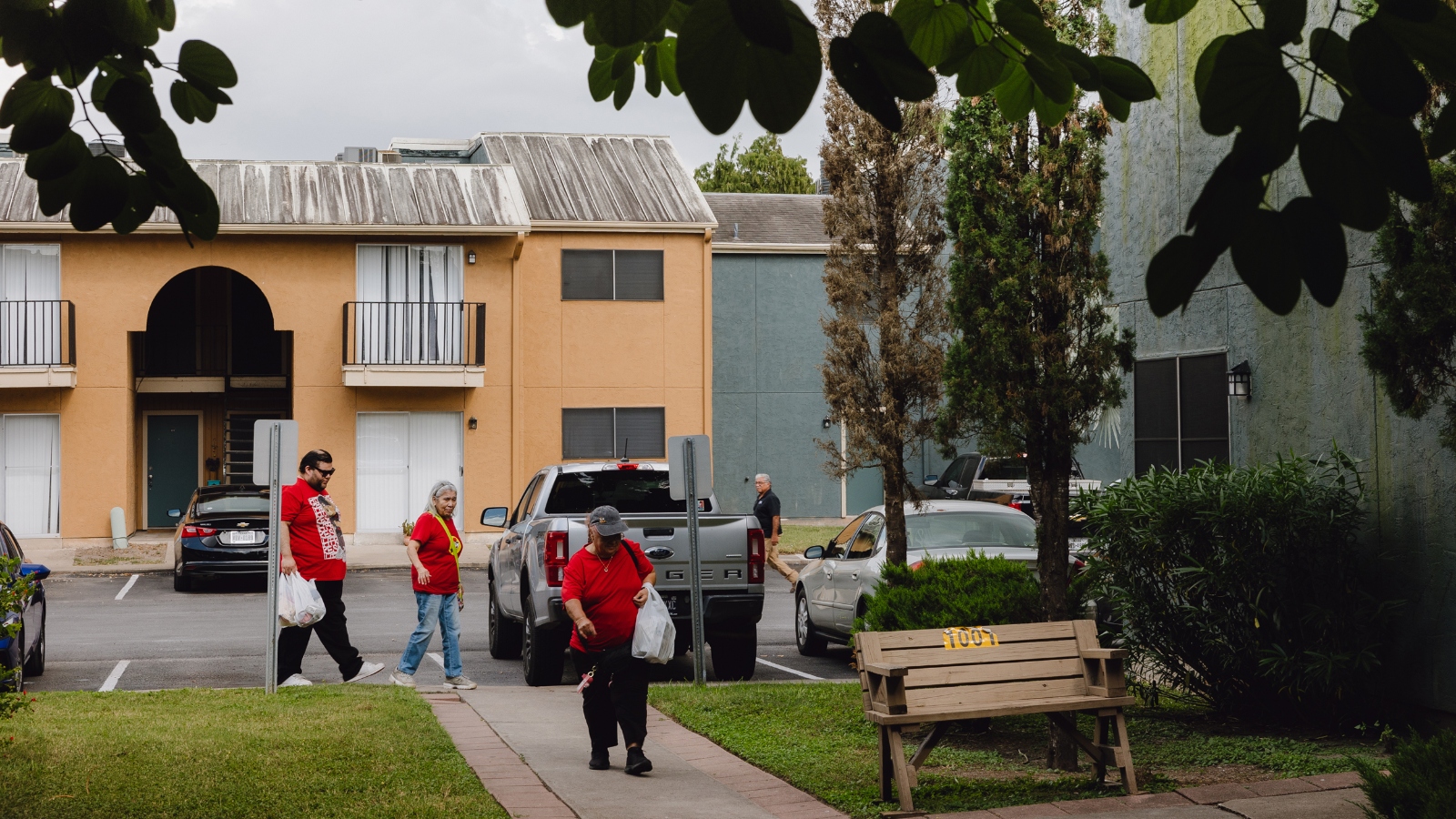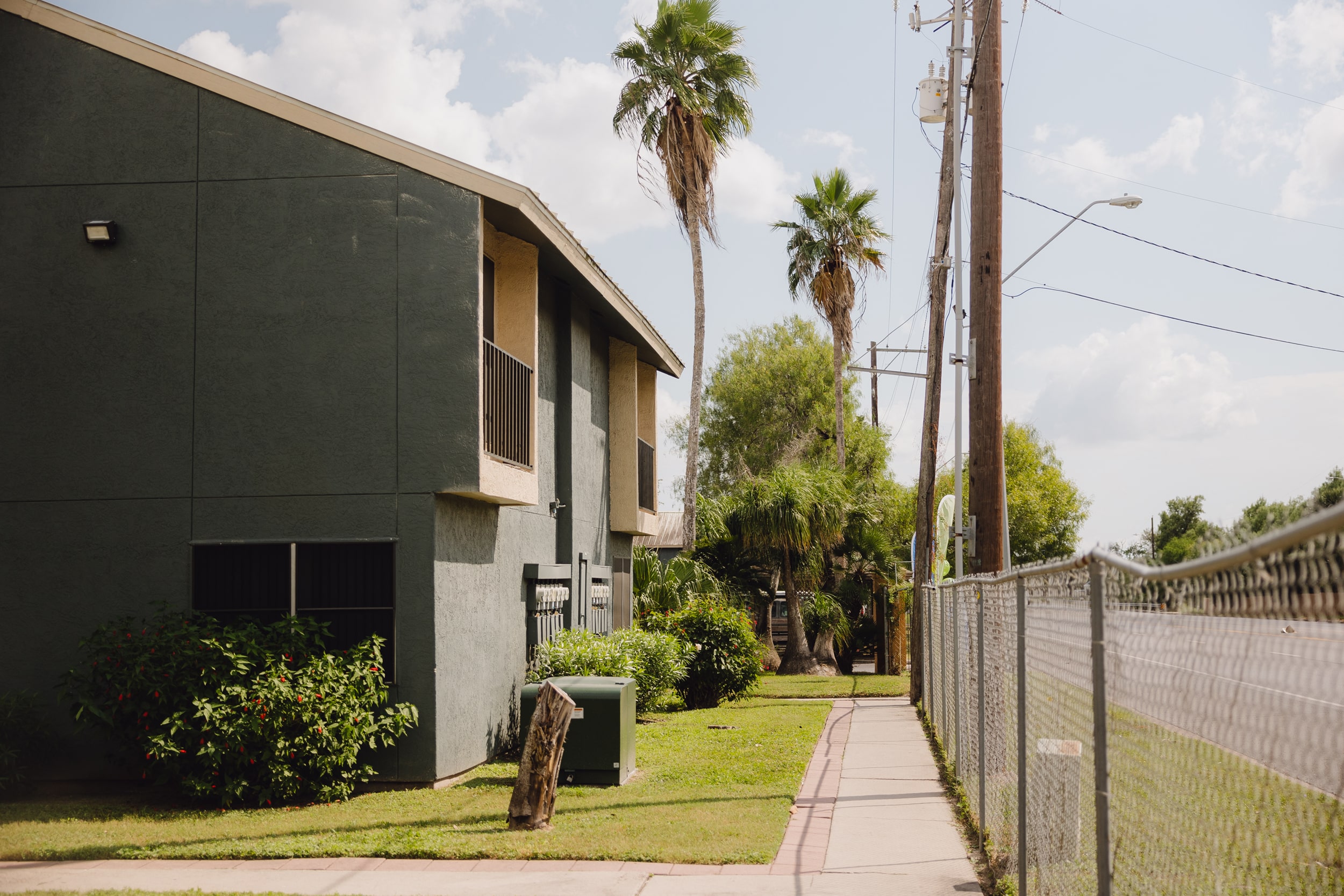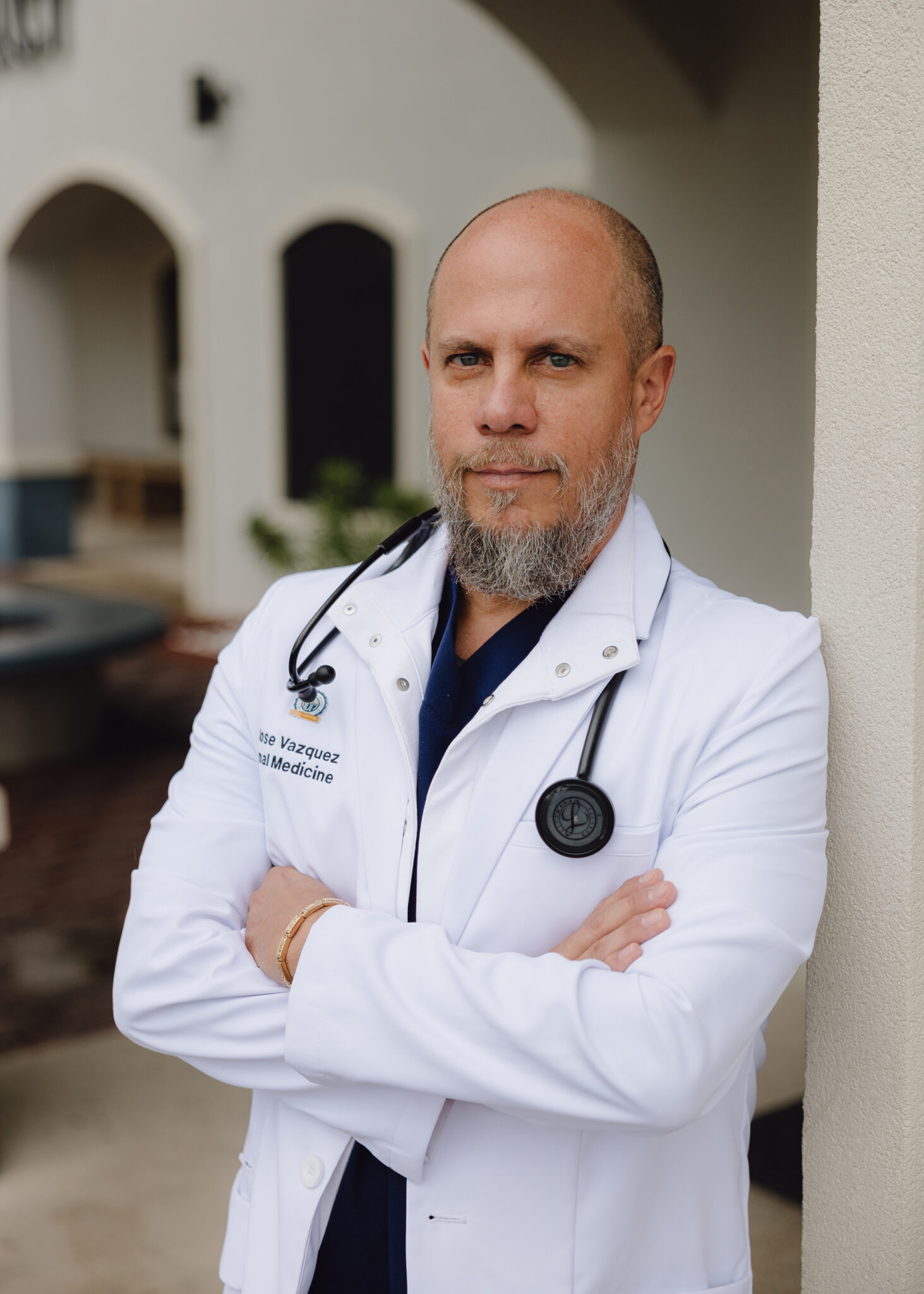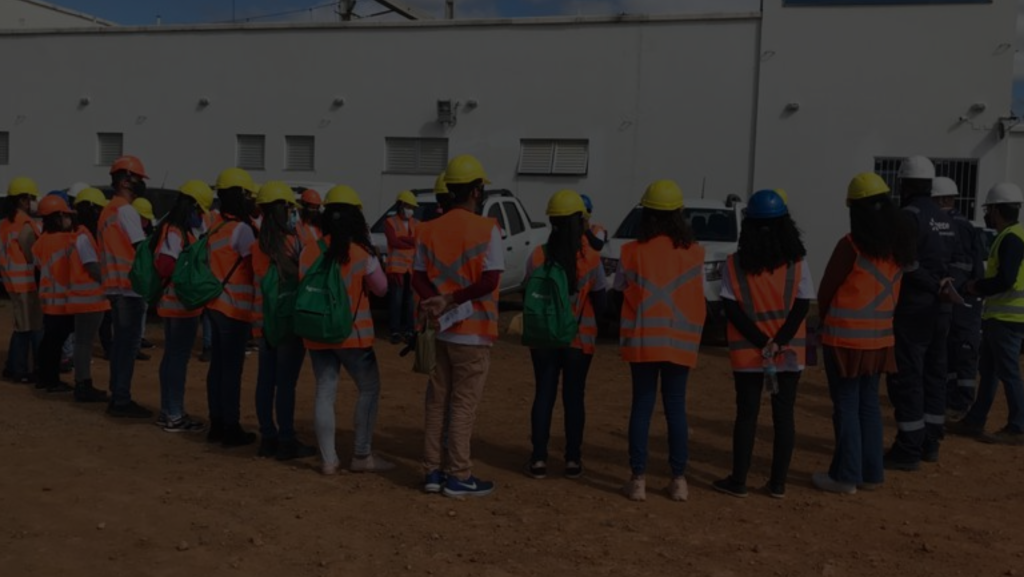
Something seemed amiss when police officer Oscar Lizarraga arrived at the Conquistador Apartments.
Maria Ester Singh hadn’t yet paid that month’s rent, and the apartment manager said that was unusual. Singh’s daughter, who lives outside Houston, hadn’t heard from her since April. She asked a cousin in Brownsville to check in on her. Now it was May 8, and no one answered a knock at the door of unit 1012, which was latched from the inside.
Joaquin Galvan, 82, Maria Trinidad Galvan, 78, and Singh, 60, lived in the apartment complex on Billy Mitchell Boulevard with three small dogs. Singh was the personal care attendant for Joaquin, her father, and Maria Trinidad, her aunt.
Lizarraga checked the windows and doors for signs of forced entry. Finding none, he pried the door open. He saw a body slumped on the floor. He asked Maria’s cousin and the apartment manager to wait outside.
The three family members had been dead for days. A pathologist attributed the deaths to complications of diabetes and extreme heat. “Multiple floor fans were in operation,” according to the autopsy report. “The air conditioner was reportedly not in operation and the inside thermostat displayed a reading of 88 F.” Temperatures had been in the 90s recently, and on the day the bodies were found, the mercury would hit 104.
Police said the AC was turned on when they entered the apartment. “Whether or not it was functioning properly is something that was undetermined,” a Brownsville Police Department spokeswoman said.
Chris Lee / San Antonio Express-News
Either way, the pathologist’s conclusion was clear: the heat, along with their chronic medical conditions, was enough to kill all three family members.
The case illustrates the latent threat of extreme heat in deep south Texas and the disproportionate impact of climate change and high temperatures on the elderly. It also shines a light on the outsized role isolation plays in heat-related deaths, especially among the elderly in America, one-quarter of whom are considered “socially isolated,” according to the National Academy of Sciences.
The Rio Grande Valley has elevated rates of diabetes, heart failure and other chronic conditions. Now the population faces an additional threat: hotter days and nights, and more of them.
Poverty and lack of health insurance magnify the risk of heat illnesses and deaths. Other aggravating factors: jobs that require people to withstand long hours in the hot sun and electric bills too high for low-income families to pay.
“It’s 104 degrees and frequently one of the hottest parts of the United States,” said Dr. Ivan Melendez, the health authority for Hidalgo County, part of the Rio Grande Valley. “It’s a tremendous amount of cofactors coming together… It’s just a total nightmare. It’s a perfect storm.”
Danielle Arigoni, an urban planner and author of “Climate Resilience for an Aging Nation,” said the elderly are often left out of climate change and disaster planning, even though they die at disproportionate rates during natural disasters.
“How many more times do we have to see these headlines before we do things differently?” she said. “This is a tragedy. Our older adults deserve better.”
“Completely preventable”
Maria Trinidad and her brother Joaquin had spent their whole lives in Brownsville.
Their first home was just a few miles from the Conquistador Apartments. The Galvan family lived at 1054 Roosevelt Avenue in 1950 when interviewed for that year’s census. Their father, Alberto, was born in Brownsville and worked as a longshoreman at the port. His wife, Maria Trinidad, was from the town of Cuero, southeast of San Antonio.
By 1950 they had seven children. Joaquin was the third, born in 1941, and Maria Trinidad the fifth, born in 1945.
Joaquin wed Minerva Cervantes in 1964 when he was 22. The couple continued to live at the house on Roosevelt, where they had four children of their own. The Brownsville Herald reported the death of a “baby Alberto” in 1973.
It’s unclear how Joaquin and Maria Trinidad wound up at the Conquistador Apartments or how long they had been there.

Chris Lee / San Antonio Express-News
Family members did not respond to requests for interviews. But publicly available records paint a picture of a family that scattered across Texas and beyond, likely leaving few relatives in Brownsville to help the aging siblings. The cousin who called the police told them she had not spoken with them in more than two years.
Investigators have not determined the exact sequence of events leading up to the deaths. Months later, crime scene tape still hung from the doorway of the apartment. Brownsville police said their investigation is ongoing, and added, without elaborating, that they are looking into the possibility of elder abuse.
The Conquistador Apartments, a cluster of unremarkable two-story buildings painted blue and light orange, is managed by an Austin company. Rents for one-bedroom apartments start at $699. The unit where the three family members died is a two-bedroom and is currently listed for rent at $879 a month. The apartments at Conquistador have central air conditioning, and the walkways are shaded by trees.
When officer Lizarraga entered unit 1012 on the morning of May 8, he found Singh’s body in a front room and the bodies of Joaquin and his sister in two back bedrooms. The siblings both appeared to have fallen out of bed. All three bodies were in a state of decay.
Lizarraga called animal control to take control of the three small dogs barking at his feet. He called a Justice of the Peace, detectives and crime scene investigators. Employees of two funeral homes arrived by midday. The bodies were transported for autopsies. Investigators started interviewing neighbors and family members.
The autopsy report said the outdoor temperature was 85 degrees and the heat index was 96.8 when the family was found at about 9 a.m. that day. Heat index combines relative humidity and air temperature to capture how hot it feels under certain weather conditions.
The pathologist determined that heat contributed to all three deaths. Singh died of diabetes ketoacidosis (DKA), complicated by heat exposure. DKA develops when the body doesn’t produce enough insulin, and acids known as ketones build up in the bloodstream. Without insulin, Singh would have declined rapidly until she entered a diabetic coma. The combination of high blood sugar and heat were fatal.
Maria Trinidad died of diabetes mellitus, hypertension and hypothyroidism complicated by heat exposure. Joaquin died of diabetes mellitus, hypertension and elevated cholesterol, complicated by heat exposure.
“This family’s death was completely preventable,” said Jeff Goodell, an Austin-based journalist and author of “The Heat Will Kill You First.”
He pointed out that Texas has made no statewide effort to map vulnerable communities or reach the populations most endangered by excessive heat. He drew a contrast to the extensive governmental warnings and preparations that precede the arrival of a tropical storm or hurricane.
“This is what happens when you have a government, local and state, that is not taking this risk seriously,” Goodell said of the Brownsville deaths.
“Numbers that we have not seen before”
As diabetics, Joaquin, Maria Trinidad and Singh were at greater risk from the heat. The damage diabetes does to nerves and blood vessels inhibits the body’s cooling mechanisms. When a person’s blood sugar spikes, they are also at risk of dehydration because they will urinate excessively to expel the blood sugar.
Jose Vazquez, an internist in the Rio Grande Valley, explained that a diabetic’s “temperature regulation system is already impaired.” He said medications to treat diabetes can further blunt the body’s response to heat.
“We are exposed to high temperatures all year round,” Vazquez said. “However, over the last few years we have reached numbers that we have not seen before – 110, 112 degrees at the peak.”
Left: Jose Vezquez, an internist in the Rio Grande Valley. Right: Dr. James Castillo, the health authority for Cameron County. Chris Lee/San Antonio Express-News
One in three Rio Grande Valley residents has diabetes, about double the national rate, according to recent research. Many Valley residents with diabetes never receive a diagnosis and the disease goes unmanaged.
Many people with diabetes, especially those without health insurance, don’t seek treatment until the disease is already advanced. Brownsville is the seat of Cameron County, where 29% of residents are uninsured and another 26% are on Medicaid or other income-based public insurance. Without treatment, otherwise preventable wounds and infections lead to amputations.
The Rio Grande Valley, which encompasses Cameron, Hidalgo, Starr and Willacy counties, has higher rates of diabetic amputations than the rest of the state.
Joaquin Galvan was a below-the-knee amputee, although it could not be determined whether his diabetes was the reason. He used a wheelchair and was functionally immobile. His sister Maria Trinidad had congestive heart failure and hyperthyroidism in addition to diabetes. The siblings required round-the-clock care.
Singh was employed by two home health care agencies as a personal care attendant for her father and aunt. She also was managing her own diabetes. Once Singh was incapacitated, the elder siblings may have been unable to seek help.
Dr. James Castillo, a hospice doctor and health authority for Cameron County, said many of his patients with complex health problems prefer to be treated at home. He often has to consider whether home is a safe environment. Does the AC work? Is there a heat wave? Will the electricity stay on to keep medical equipment running?
“You have a very large population of medically fragile people,” he said of the Rio Grande Valley. “And in a crisis, fragility shows.”
“Don’t really know who they were”
Arigoni found that in disasters such as Hurricane Katrina, Texas’ Winter Storm Uri in 2021 and the Oregon heat dome the same year, elderly people die in disproportionate numbers. She said emergency management plans often account for elderly people at nursing homes but overlook those who are socially isolated and living at home, as the Galvans were.
“You see it time and time and time again, predictably, that older adults are dying at double, triple, quadruple the rate of other people in disasters,” she said.
Joaquin, Maria Trinidad and Maria Ester seemed to have made few impressions on their neighbors. Oralia Favata, 68, who lives a few doors down from their apartment, said she had never met them but would notice flyers and mail piling up outside the door.

Chris Lee / San Antonio Express-News
“I never saw anybody come in or out or visit them,” she said. “I don’t really know who they were.”
On May 8, she watched a woman break down in tears outside the Galvans’ apartment. Favata said a relative of the Galvans gave her a bag of left-over dog food from the apartment before driving back to Houston.
Other neighbors repeated similar stories. Several said they learned only after the fact who the Galvans were.
The Sunset Memorial Funeral Home took care of the family’s remains but no funeral services were held. One relative wrote on an online memorial page for Maria Trinidad that she would miss watching telenovelas with her. “I will miss you forever Tia Trine.”
“You can’t live here (without AC) … period”
Brownsville has always been hot and humid. But temperatures rarely reached 100 degrees in the 1940s and 1950s, when the Galvans were growing up. Air conditioning was not yet widespread in the Rio Grande Valley. In old adobe houses, people would open the doors at night and let cross-ventilation cool their homes.
Over the span of the Galvan siblings’ lifetimes, that changed. As temperatures creeped up, air conditioning became ubiquitous.
The five hottest summers in Brownsville since record keeping began in 1878 have all been since 2018. 2023 was the hottest year on record. The 40 days of 100-degree heat in 2023 shattered the previous record of 12 days. So far in 2024, there have been 7 days of 100 degree heat, the fifth highest annual total.

Chris Lee / San Antonio Express-News
“I remember when we were kids in the 1960s, 1970s, hardly anybody had air conditioning,” said Dr. Ivan Melendez, the Hidalgo County health authority. “We couldn’t afford it. It was really more of a privilege.
“Now if you don’t have air conditioning in the Valley, you can’t live here,” he said. “You cannot survive the summer here without air conditioning. Period.”
Extreme heat is starting earlier in the year. May 2024 was the hottest May on record in the city. Overnight, the heat index often stayed above 90 degrees during May. High nighttime temperatures prevent the body from cooling off and recovering from daytime heat.
As of early September, Brownsville EMS had responded to 42 heat-related emergencies during summer 2024. Paramedic Hector Martinez estimated about 100 additional calls were most likely heat-related.
South Texas Health System’s acute care and emergency departments in the Rio Grande Valley saw a spike in heat-related illnesses last year. From 2020 to 2022, the system recorded fewer than 200 heat-related illnesses a year. In 2023, they treated 325. By the end of August this year, the network had surpassed last year’s total of heat-related illnesses.
The Texas Department of State Health Services uses death certificates to determine the number of deaths attributed to heat in Texas by county. When 10 or fewer heat deaths are recorded in a county, the exact number is withheld to protect confidentiality. Most years in Cameron County, the number has been below 10, according to data obtained by the Texas Tribune. In 2023, the total jumped to 11, including deaths where heat was a contributing factor. Two were migrants—a 44-year-old Mexican and a 32-year-old Guatemalan who succumbed to “environmental heat exposure” after crossing the border. The 2023 total included a 43-year-old man with Down syndrome who died in a house without air conditioning. Data for 2024 is not yet available.
Medical professionals say death certificates present an incomplete picture of heat-related fatalities. Physicians list the direct cause of death—a heart attack, a drug overdose—but often do not know about contributing factors.
Autopsies can yield more information. In Cameron and Hidalgo Counties, Justices of the Peace determine when to have a forensic pathologist conduct an autopsy. (In more populous counties, a medical examiner’s office makes that decision.)
Melendez said that under this system, a death certificate may be completed by a doctor, or a Justice of the Peace, or a coroner. The role of heat is not always considered.
“Everyone has a different opinion,” he said. “And a different level of expertise.”
Alone in their moment of crisis
As a community paramedic in Brownsville, Hector Martinez keeps a close eye on the number of 911 calls and where they are coming from. Community paramedics provide preventive as well as routine medical care to minimize repeat hospital admissions in under-served populations.
There’s a clear pattern to heat-related emergencies, he said. Most of those calls come from low-income neighborhoods. Martinez said the most common such emergency involves a man who works outdoors, or in a confined space such as a restaurant kitchen, and underestimates the toll of the heat. “They work landscaping. They work in restaurants—cooks, waiters, waitresses,” he said. “They do manual labor, they’re builders.”
On a September afternoon, Martinez drove the backstreets of Brownsville’s Southmost neighborhood with the familiarity of a taxi driver. More than three in 10 residents in this ZIP code (78521) live in poverty, according to census data. The median household income is $38,000.

Chris Lee / San Antonio Express-News
A $100 repair to an air conditioner could help keep a low-income resident out of the emergency room. Martinez will find a charity, church or nonprofit to help.
“We don’t have a budget for it,” he said. “So we try and find people.”
The Area Agency on Aging and Rotary Clubs are some of his most reliable partners. But their funds run out every year.
The federally funded Low Income Home Energy Assistance Program helps people below the poverty line pay for heating and cooling. But in states such as Texas, with large low-income populations and extended periods of extreme heat, the funds cover a small fraction of those eligible. The Hidalgo County agency that disburses utility assistance funds is closed to applications because of high demand.
Christopher Basaldú, a co-founder of the South Texas Environmental Justice Network, said Brownsville should open more cooling centers. The organization hands out bottled water at its downtown Brownsville office, which an overtaxed window unit struggles to keep cool during the summer.
“Climate change is happening. The heat is going up and it’s becoming more relentless,” he said. “People are choosing to not run their air conditioners as part of ways of saving money.”
The City of Brownsville did not respond to questions about its preparedness for extreme heat. Nor did city commissioner Bryan Martinez, who represents the area of the Conquistador Apartments, or Cameron County Judge Eddie Treviño.
The Community Lighthouses in New Orleans have been held up as a model for protecting vulnerable populations from the heat. These are churches and other community spaces equipped with solar power to keep the lights and air conditioning running during natural disasters or heat waves. The Lighthouses are dispersed throughout neighborhoods within walking distance of vulnerable populations. Staff knock on doors to inform residents about their services before disaster strikes.
Ailing and isolated, the Galvans were alone in their moment of crisis.
After they died, there was no official response from the city or county. There was no public remembrance or reckoning. No obituaries were published. Neighbors were left to puzzle over how the family’s suffering went unnoticed. The Galvans’ surviving relatives mourned in private.
Another hot summer ran its course.









